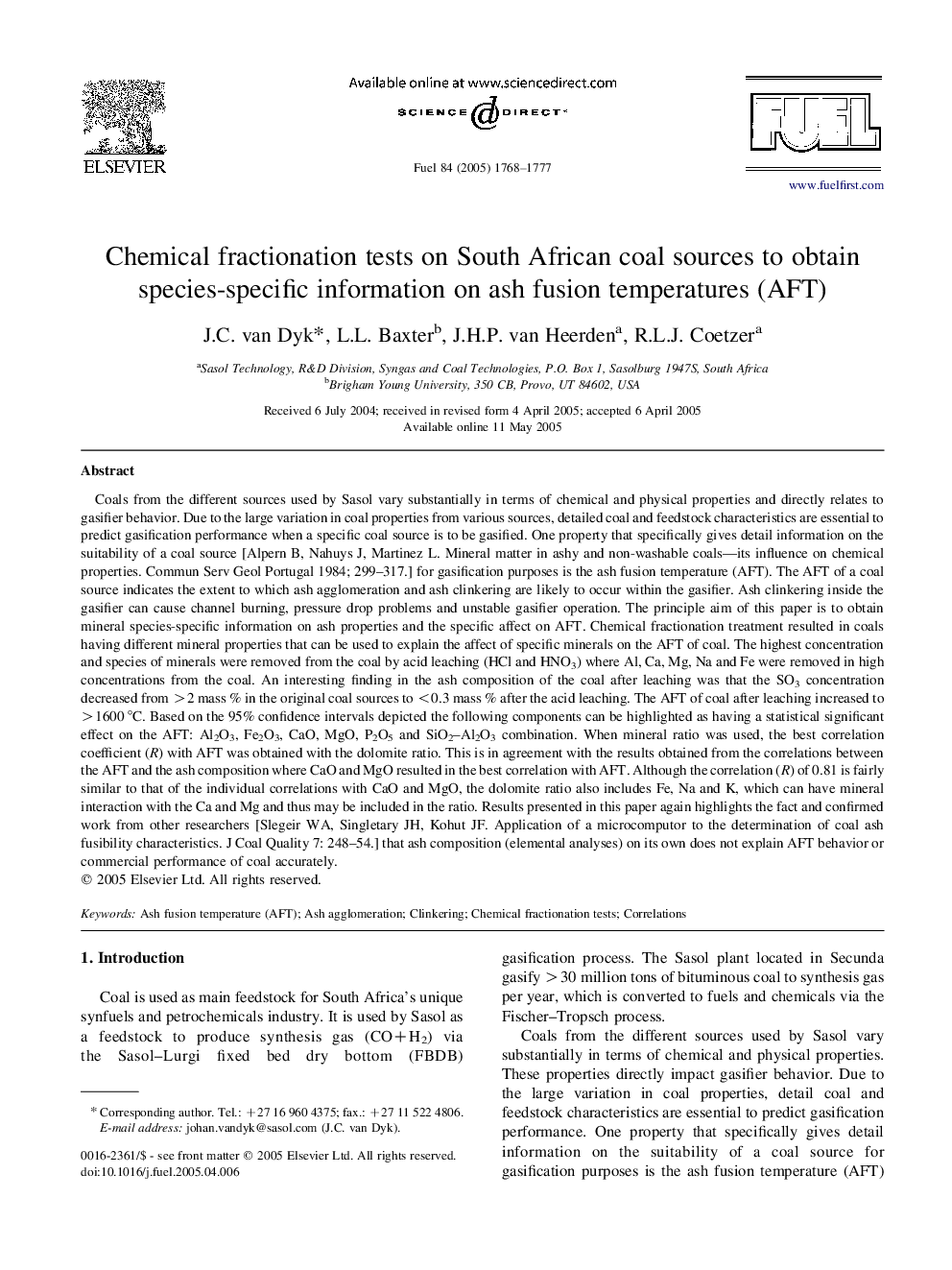| Article ID | Journal | Published Year | Pages | File Type |
|---|---|---|---|---|
| 9629073 | Fuel | 2005 | 10 Pages |
Abstract
Coals from the different sources used by Sasol vary substantially in terms of chemical and physical properties and directly relates to gasifier behavior. Due to the large variation in coal properties from various sources, detailed coal and feedstock characteristics are essential to predict gasification performance when a specific coal source is to be gasified. One property that specifically gives detail information on the suitability of a coal source [Alpern B, Nahuys J, Martinez L. Mineral matter in ashy and non-washable coals-its influence on chemical properties. Commun Serv Geol Portugal 1984; 299-317.] for gasification purposes is the ash fusion temperature (AFT). The AFT of a coal source indicates the extent to which ash agglomeration and ash clinkering are likely to occur within the gasifier. Ash clinkering inside the gasifier can cause channel burning, pressure drop problems and unstable gasifier operation. The principle aim of this paper is to obtain mineral species-specific information on ash properties and the specific affect on AFT. Chemical fractionation treatment resulted in coals having different mineral properties that can be used to explain the affect of specific minerals on the AFT of coal. The highest concentration and species of minerals were removed from the coal by acid leaching (HCl and HNO3) where Al, Ca, Mg, Na and Fe were removed in high concentrations from the coal. An interesting finding in the ash composition of the coal after leaching was that the SO3 concentration decreased from >2 mass % in the original coal sources to <0.3 mass % after the acid leaching. The AFT of coal after leaching increased to >1600 °C. Based on the 95% confidence intervals depicted the following components can be highlighted as having a statistical significant effect on the AFT: Al2O3, Fe2O3, CaO, MgO, P2O5 and SiO2-Al2O3 combination. When mineral ratio was used, the best correlation coefficient (R) with AFT was obtained with the dolomite ratio. This is in agreement with the results obtained from the correlations between the AFT and the ash composition where CaO and MgO resulted in the best correlation with AFT. Although the correlation (R) of 0.81 is fairly similar to that of the individual correlations with CaO and MgO, the dolomite ratio also includes Fe, Na and K, which can have mineral interaction with the Ca and Mg and thus may be included in the ratio. Results presented in this paper again highlights the fact and confirmed work from other researchers [Slegeir WA, Singletary JH, Kohut JF. Application of a microcomputor to the determination of coal ash fusibility characteristics. J Coal Quality 7: 248-54.] that ash composition (elemental analyses) on its own does not explain AFT behavior or commercial performance of coal accurately.
Keywords
Related Topics
Physical Sciences and Engineering
Chemical Engineering
Chemical Engineering (General)
Authors
J.C. van Dyk, L.L. Baxter, J.H.P. van Heerden, R.L.J. Coetzer,
